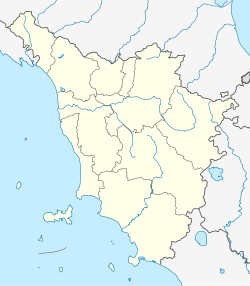This article needs additional citations for verification .(May 2015) |
Sorano | |
|---|---|
| Comune di Sorano | |
 | |
| Coordinates: 42°40′55″N11°42′54″E / 42.68194°N 11.71500°E | |
| Country | Italy |
| Region | Tuscany |
| Province | Grosseto (GR) |
| Frazioni | Castell'Ottieri, Cerreto, Elmo, Montebuono, Montevitozzo, Montorio, San Giovanni delle Contee, San Quirico, San Valentino, Sovana |
| Government | |
| • Mayor | Pierandrea Vanni |
| Area | |
• Total | 174.56 km2 (67.40 sq mi) |
| Elevation | 379 m (1,243 ft) |
| Population (1 January 2022) [2] | |
• Total | 3,091 |
| • Density | 18/km2 (46/sq mi) |
| Demonym | Soranesi |
| Time zone | UTC+1 (CET) |
| • Summer (DST) | UTC+2 (CEST) |
| Postal code | 58043 |
| Patron saint | St. Nicholas |
| Saint day | December 6 |
| Website | Official website |
Sorano is a town and comune in the province of Grosseto, in southern Tuscany, Italy. It is an ancient medieval hill town perched on a tuff outcrop overlooking the Lente River.




